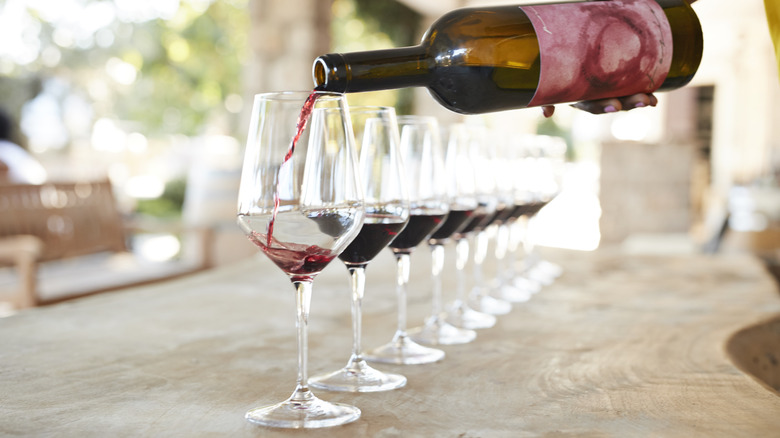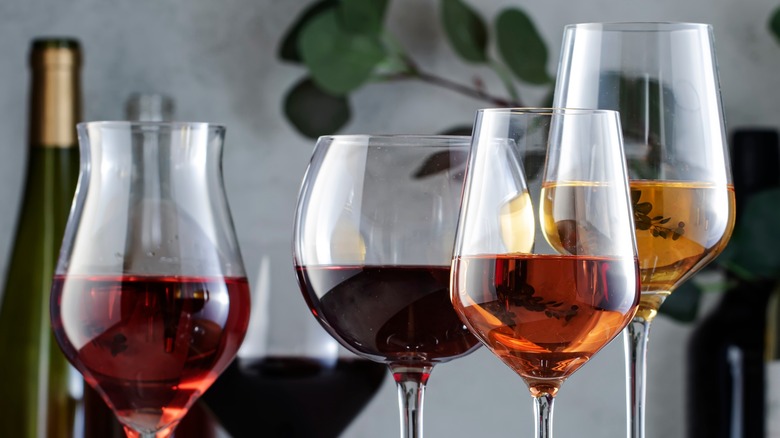Here's How Many Drinks You'll Get In A Single Bottle Of Wine
"How many glasses of wine are in this bottle?" sounds like the carnival game of every adult's dreams. It isn't as tough of a question as "How many grapes are in this bottle?" and, better yet, the winner gets to go home one bottle richer.
A standard wine bottle contains 25 fluid ounces, and according to the Centers for Disease Control (CDC), a glass of wine measures 5 fluid ounces. That equates to 5 glasses of wine per bottle. Standard-sized wine bottles come in various shapes, and that's because each blend has its own storing specificities. Apart from different shapes, bottles of wine can also differ in size.
A magnum bottle holds 50 fluid ounces, which is double the size of a standard bottle, meaning it contains 10 glasses of wine. A half bottle is exactly as it sounds — around 12.5 fluid ounces or half a standard bottle. Half bottles pour around two and a half glasses of wine.
Once a bottle is opened, the wine becomes all the more susceptible to change based on its environment. So, just as a bottle's shape and size can vary, wine glasses are also specifically designed to optimize the quality of the wine, catering to the characteristics of the specific types and varietals that are meant to be poured into those glasses.
Different wine glass types and their perks
Wine glasses are specifically designed to optimize the quality of the wine experience, catering to the characteristics of the specific types and varietals to be poured into those glasses. While choosing a particular glass to eke out a vintage's best qualities is not crucial, it can be a small yet significant step to bringing a wine to its full potential.
If you were to ask a panel of people to draw a wine glass, chances are the majority would draw something that resembles a universal wine glass. Hence its name. A universal wine glass complements a diverse set of wines due to its tall, cylindrical bowl. It allows for enough surface area to swirl a wine, and it concaves slightly at the rim to trap in the aromas.
The next two most common glasses are most likely the Bordeaux glass and the chardonnay glass. A Bordeaux glass has a long bowl, maximizing the amount of air above the liquid to increase oxidation and initiate decanting. The varietals that comprise a typical Bordeaux — Cabernet Sauvignon, Cabernet Franc, and Merlot — usually need oxygen to fully open up. A chardonnay, on the other hand, features a smaller bowl, as white wines tend to require less oxygen.

